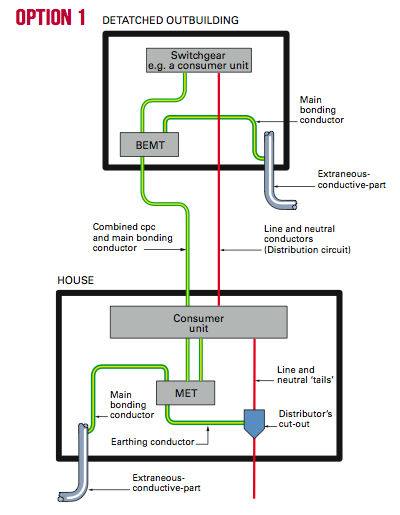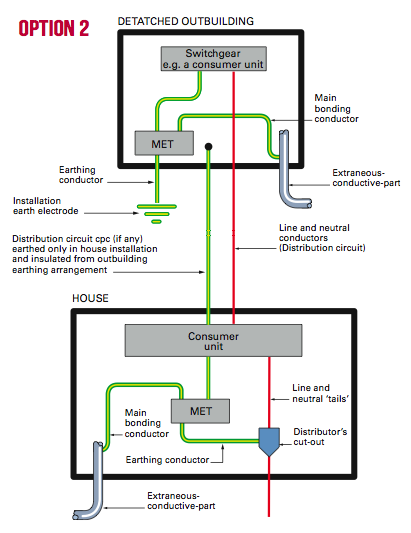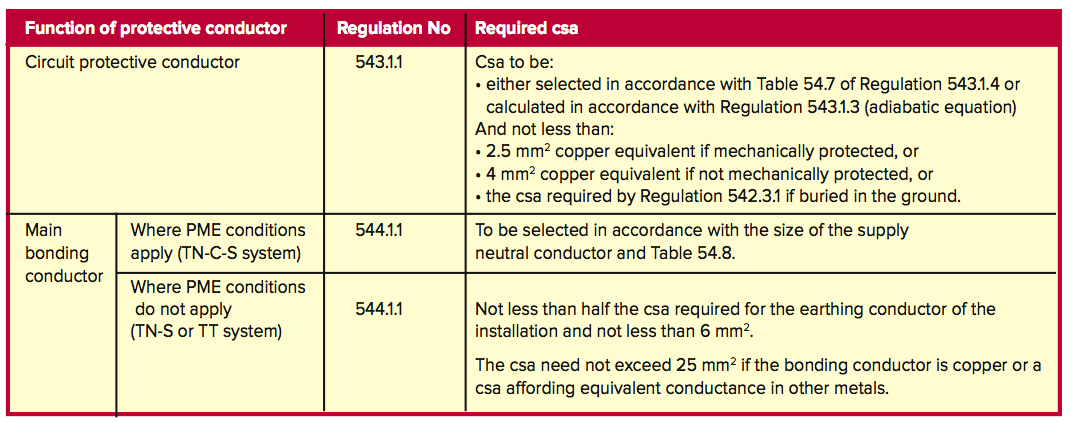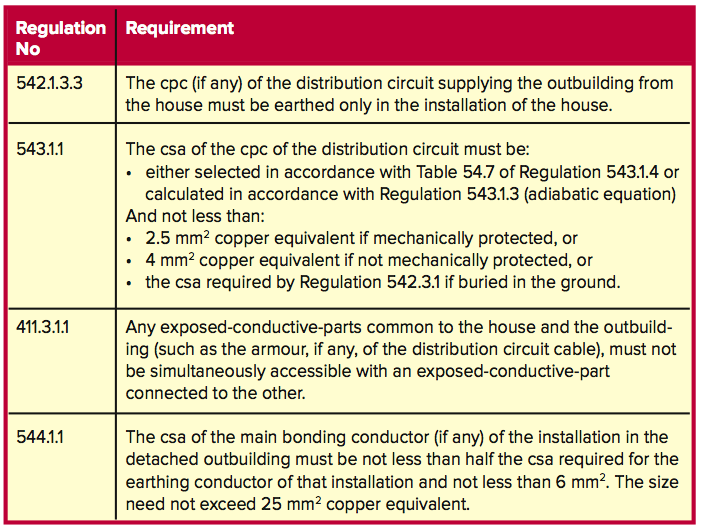D
Deleted member 9648
It's staggering that the myth about sheds and PME/TNCS still persists.
It's staggering that the myth about sheds and PME/TNCS still persists.
Well with a 4 core 16mm SWA Lewis in the case of your job you could have a 32mm2 CPC if you wanted !
My intention is to use a none RCD protected MCB currently in the CU, utilising the 16mm SWA to supply an RCD-protected, small garage type consumer unit with a MCB for the sockets, and a MCB for the lighting. I will use the 3rd core as suggested. Hopefully I can take the SWA straight to the house CU, but I have a feeling that I will need to terminate the SWA and continue the supply in T+E back to the CU. Unfortunately, the house's CU is back in the centre of the house in an understairs cupboard.
[\QUOTE]
Converting to T&E may put you back at square one with the need for an RCD for the submain depending on how it is installed/routed.
The 'best' way to do it, in my opinion, would be to run the SWA back to the CU location and fit a switch fuse to protect it rather than an mcb.
post a video or pictures when finished from start to the end product .good luck .I shall investigate further when I'm home, and let you all know the outcome/finished product.
F me! did you swallow the reg's book!Basic requirements for earthing and bonding
Where an installation serves more than one building, main protective bonding is required in each building served, except for a building where there are no extraneous-conductive-parts, such as metallic water, gas or oil installation pipes (Regulation 411.3.1.2 refers).
Option 1: Extending the earthing and bonding system

The image shows an example of the earthing and bonding arrangements where the installation in a house is extended to serve a detached outbuilding. A Building Earth Marshalling Terminal (BEMT) is usually provided in the outbuilding to marshal together the main bonding conductor(s), if any, and the circuit protective conductors (cpcs) in that building. The BEMT must be connected to the MET by:
• the cpc of the distribution circuit supplying the outbuilding, and
• a main bonding conductor, if there are any extraneous-conductive-parts at the outbuilding.
As shown, the functions of the cpc and main bonding conductor (if any) may be combined in a single protective conductor having a cross sectional area (csa) meeting the requirements for both functions.
Option 2: Making the installation in the detached outbuilding part of a TT system with its own installation earth electrode and MET

The image shows an example of the earthing and bonding arrangements where an installation in a house supplies an installation in a detached outbuilding, forming part of a TT system with its own installation earth electrode and MET. It is desirable for there to be no connection between the earthing and bonding arrangement of the installation in the outbuilding and that of the installation in the house (such as through a protective conductor or shared metallic pipeline), as shown.
Note: Although both options show an earthing facility provided by the distributor being used as the means of earthing (TN-S or TN-C-S system), the earthing conductor could be connected to an installation earth electrode instead (TT system).
Table 1 – Sizing requirements for cpc and main bonding conductor

Note. The requirements of Regulation 544.1.1, referred to in Table 1, can result in a main bonding conductor size greater than that of the live conductors or cpc of the distribution circuit supplying the outbuilding, particularly where PME conditions apply (TN-C-S system).
Table 1 summarises the requirements of BS 7671 for sizing the cpc and main bonding conductor to the outbuilding. If the functions of these two conductors are combined in a single protective conductor, this must have a csa not less than that required for either function. Where there is no such connection, the main requirements of BS 7671 applying to the earthing and bonding are as summarised in Table 2.
Table 2 – Requirements where the outbuilding installation forms part of TT system with no connection to the earthing and bonding arrangements of the house installation:
A further consideration applies where there is a connection between the earthing and bonding arrangement of the detached outbuilding and that of the installation in the house, if the latter installation forms part of a TN-C-S system where PME conditions apply.
Where this is the case, PME diverted neutral current may flow in the connection between the two earthing and bonding systems. To avoid harmful thermal effects caused by this current, the csa of this connection and of the main bonding conductors and the earthing conductor of the installation in the outbuilding needs to meet with the requirements for a main bonding conductor of the installation in the house (which are summarised in Table 1).

I should be able to SWA right up to the external wall and then terminate in to an IP box and run T+E under the upstairs floor and back down to the top of the cupboard where the CU is located.
Just be aware that the T+E may need RCD protection, if you do it this way.

FFS.….it's a shed with a few sockets and a few led lights with no other services.
I'd be very surprised if the load is going to be anywhere near 30 amps. Get a run of 6mm 3 core swa, from main CU to shed CU, put in from a 32A mcb. No jointing, easy to run and no rcd protection needed, except at the shed.
Unless you're thinking of putting in a hot tub or sauna,
that is.
16mm 4 core.....you could feed a decent size indoor swimming pool with that...
Fair enough, Lewis. 16mm 4core will be difficult to work with and is real over kill. Even future proofing, 10mm 3 core will suffice, easily, and you wont find many more problems installing that rather than 10mm T+E, plus you've got your 10mm earth for bonding. Use a m/clad adaptable box or isolator, next to the CU for termination, if you have problems terminating directly.IPF, I thought I mentioned it in an earlier post, but maybe not: I'm trying to future proof the installation and the Mrs Ashton does keep mentioning a hot tub. I know the 16mm is overkill, but it is free and I'm a tight Yorkshireman.
I might just go with the original idea of ducting it (also got some available for free!) And use the smaller SWA.....even if I do have to buy it.At least if Mrs Ashton decides on a hot tub eventually, it doesn't mean ripping up the garden!









